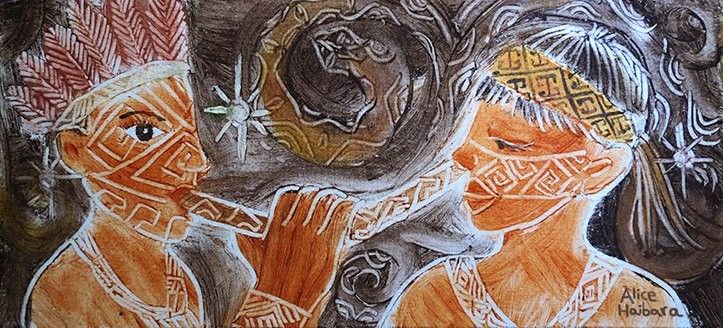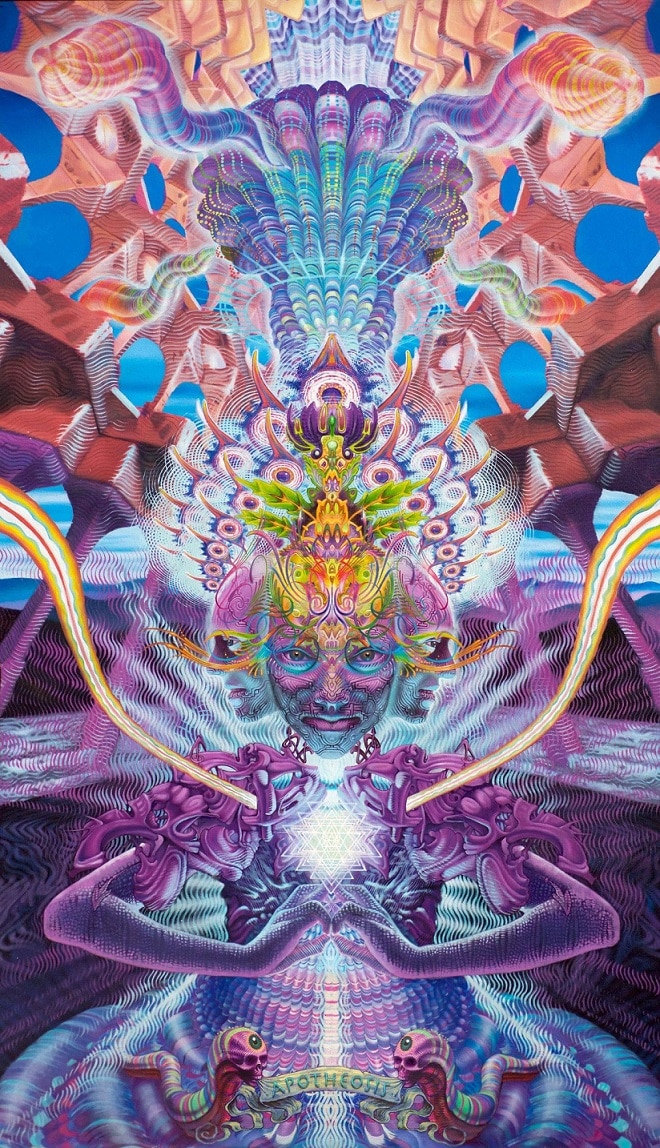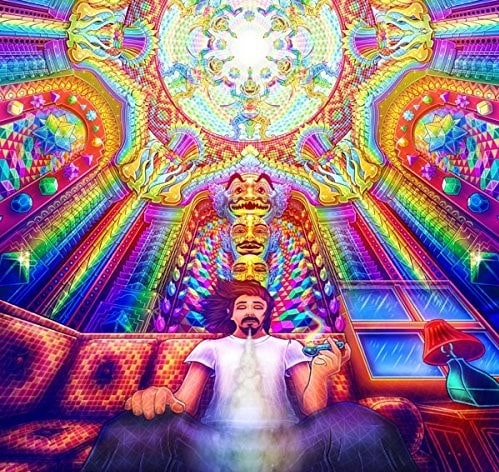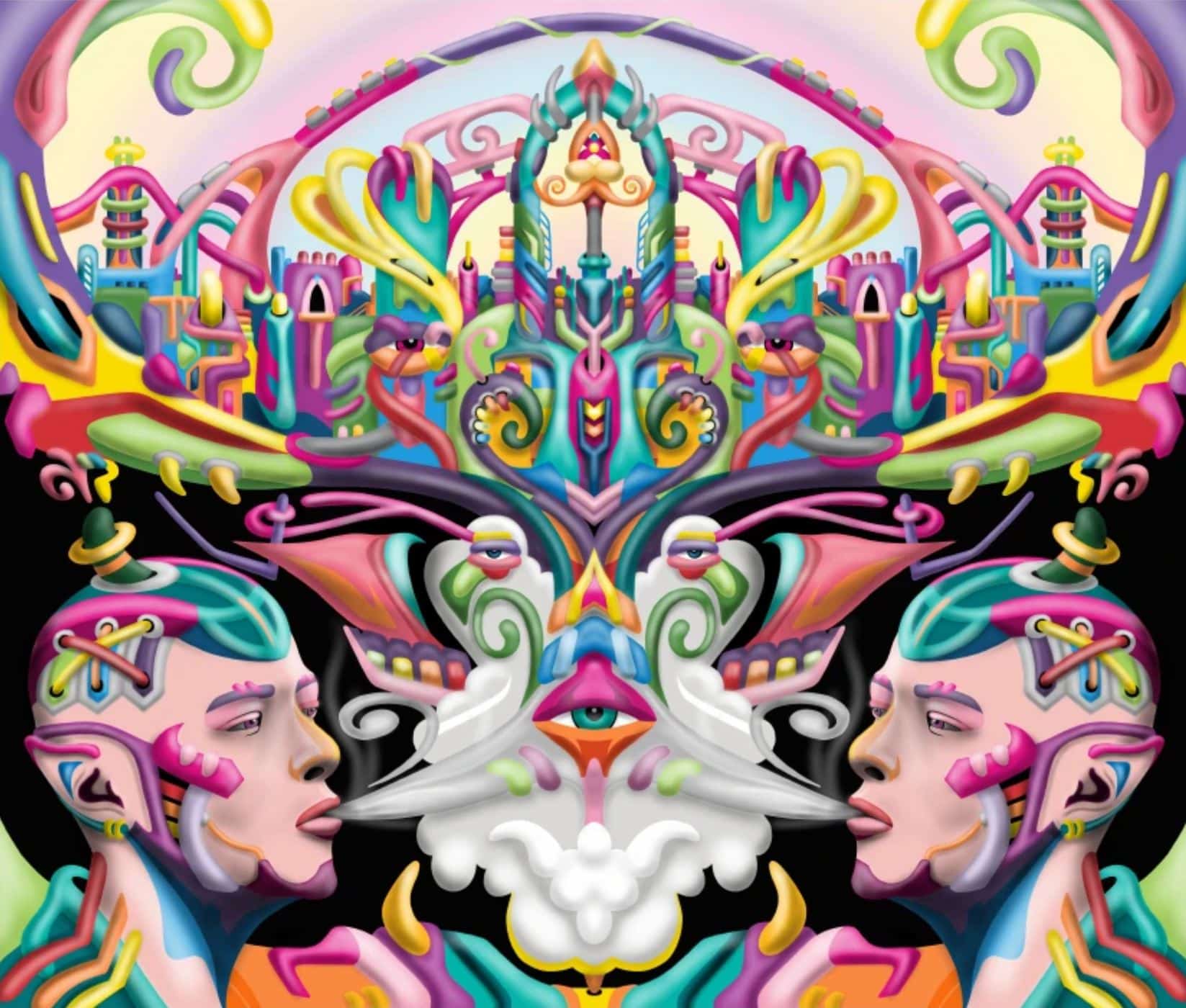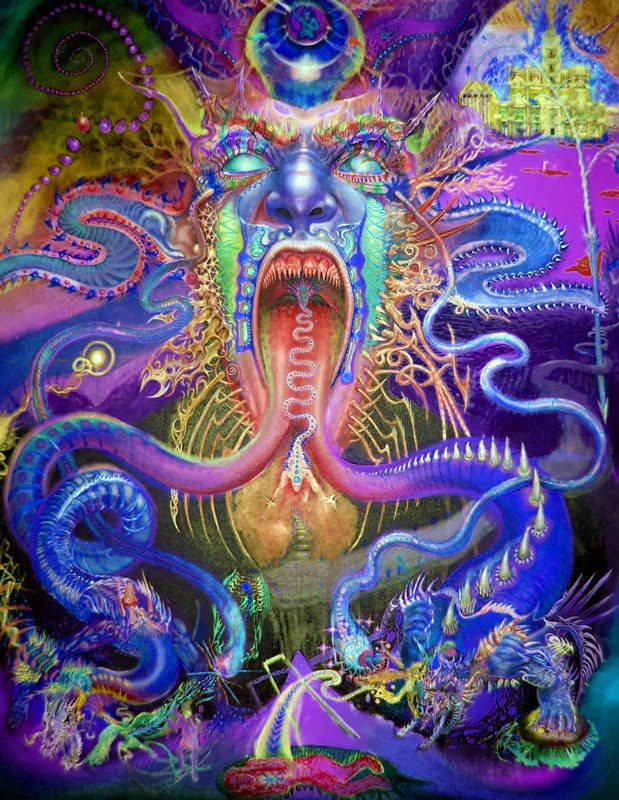The Seeker’s Guide to DMT
The Seeker's Guide to DMT
N,N-Dimethyltryptamine, the Spirit Molecule, spice, deems, changa
Sovereignly claiming its spot among the top-tier entheogens, DMT is an incredibly potent hallucinogenic drug known for its power to completely transport users to otherworldly, phantasmagoric realms.
This guide is intended for those who are intrigued by DMT and would like to learn more about the Spirit Molecule and experience it in a safe context.
It should be used for harm reduction and education purposes only, and contains no advice about obtaining prohibited substances.
In this guide you'll learn:
- A basic overview of DMT – what it is, where it exists, how it works, what the DMT trip is like, and what the risks are.
- How to do DMT – from smoking it as a crystal to consuming it as an admixture in powerful brews and herbal smoking blend.
- How to use DMT for healing and how to go about integrating the experience.
Sounds good? Let's get started!
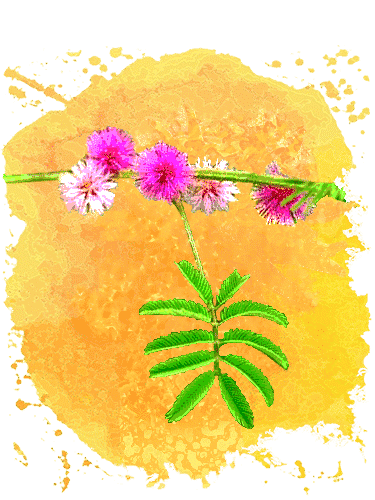
Table of Contents
Part 1:
DMT 101
“DMT seems to argue, convincingly, I might add, that the world is made entirely of something, for want of a better word, we would have to call magic.”
- Terence McKenna
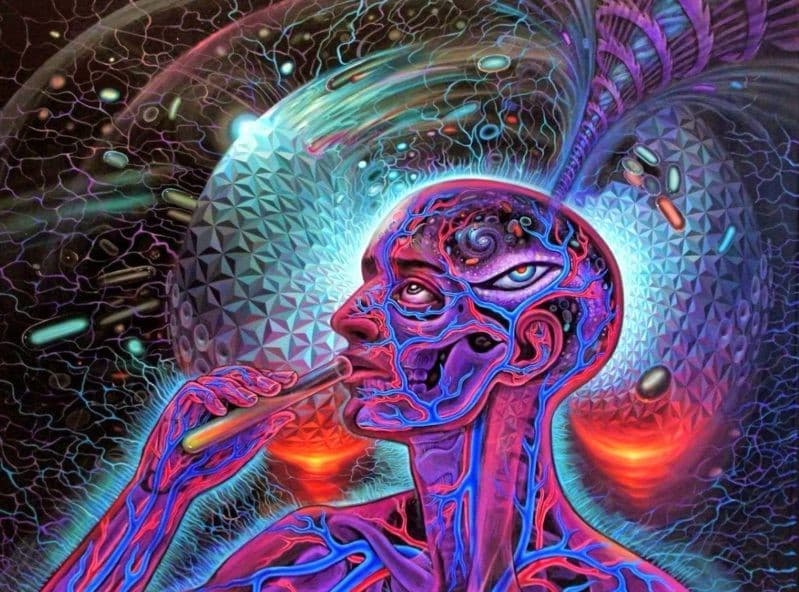
What is DMT?
Dimethyltryptamine is a unique and powerful psychedelic drug. Unlike magic mushrooms, LSD, and other commonly consumed recreational substances, the effects of DMT are not limited to sensory changes and visions. Rather, if done properly, the ‘spirit molecule’ can catapult the soul of the user to entirely alternate planes of existence and give them a peek at otherworldly landscapes, hyperdimensional objects and structures, and intelligent entities.
This all may sound far-fetched, but anyone who has broken through with DMT can attest to the notion that the experience can not be something their minds created under the influence of a psychedelic substance, but is much more akin to the feeling of being a guest in a world or worlds which exist parallel to our default reality.
Another intriguing thing about DMT is that it exists in organisms throughout the plant and animal kingdoms. How this incredible entheogen is created in these organisms and, maybe more importantly, what the biological purpose of its presence is - we don’t know.
DMT is mostly consumed by smoking or vaporizing the pure crystal form of the molecule, infusing it into an herbal blend called changa, or drinking it along with a Banisteriopsis caapi brew in ayahuasca, or with one of the numerous analogous compounds as part of a mixture referred to as anahuasca or pharmahuasca.
Each method of consumption has its own unique effects, which we will discuss later on in this guide. But first, let’s take a look at the long role DMT has played in human social rituals and outreach to the divine.
The Ancient History of DMT
As a compound which exists in hundreds, if not thousands of plant species around the world (and particularly in South America and Australia), it was only a matter of time before humans discovered its effects. Apparently, this happened many millennia ago.
The earliest concrete evidence of the human use of DMT comes from today’s Argentina and is dated back to over 4,000 years ago. [1] Archaeologists excavated two mummified bodies, which were buried along with snuffing paraphernalia—specifically, hollowed out bones of a puma.
These snuffs were used to inhale powder made from the leguminous fruits of Anadenanthera colubrina, one of the numerous psychoactive plants widely used in South America since ancient times.
Aside from Anadenanthera colubrina and its close relative Anadenanthera peregrina, snuffs have also commonly been prepared from plants from the Virola genus. Depending on the location of use, Anadenanthera snuffs go by the names of yopo, cohoba, or vilca / huilca. Virola snuffs are known as epená.
The use of these preparations transcends the boundaries of the South American landmass; the Taíno indigenous groups of the Caribbean islands also used them. Insufflation devices with traces of DMT found in this area are estimated to come from the period between the years 1,000 and 1,500 AD. [2]
Yopo and epená were traditionally used for the purposes of spiritual and visionary journeying and healing. The ceremonies and rituals would usually involve a person forcefully blowing the snuff into the receiver’s nostrils through a long tube, but sometimes the individual would sniff it on their own using small, hollow bones.
It’s worth to note that while epená snuffs contain a significant amount of DMT, [3] the yopo snuffs’ psychoactivity actually comes mostly from its primary alkaloid, bufotenin (with DMT being present in only trace quantities). [4] This compound is also found in the venom of the Colorado River Toad, Bufo alvarius.
Yopo was not commonly ingested orally. Aside from having insignificant visionary effects due to rapid metabolization of the alkaloids by the gut enzymes, many indigenous groups also believed the oral way of intake to be dangerous. The beans from the yopo plant would be used as an ingredient in a purgative brew called bilca tauri, which would be consumed on a monthly basis in a ritualistic context. [5]
Indigenous peoples of the Amazon basin are also known for their use of the ritualistic brew ayahuasca. Ayahuasca is a concoction made by brewing two base plants (and, depending on the recipe, other potential admixtures) together. One of these plants—Psychotria viridis or Diplopterys cabrerana (depending on local availability)—contains DMT, while the other one—Banisteriopsis caapi—contains compounds which protect DMT from being broken down in the stomach when consumed orally.
The unique synergy of these two plants allows for both the healing and visionary aspects to manifest, taking the drinker on a psychonautical journey which lasts much longer than when freebase DMT is smoked and, often, offering deeper insights into the nature of their personality, including dissecting self-destructive patterns of thought and behavior.
While carbon dating DMT traces in snuffs is relatively straightforward, ascertaining the time period of DMT use within ayahuasca brews is not that simple. Cauldrons, pots, and other drinking vessels which have been retrieved from ancient times are more difficult to test for chemicals for numerous reasons, shrouding the roots of ayahuasca use in mystery.
That said, a particularly interesting ceremonial-looking stone bowl, [6] richly adorned with carvings of mythological zoomorphic and anthropomorphic figures, was uncovered in the Ecuadorian Amazon and was dated to somewhere between the years 500 BC and 500 AD. [7] According to archaeological and anthropological speculation, this vessel may have been used as a vaso de brujo (sorcerer’s cup), serving for communal drinking of ayahuasca.
Brewing the two plants seems to have either inspired the use of psychoactive snuffs with the addition of B. caapi (which some South American indigenous cultures were recorded doing [8]) or, maybe, drawn inspiration from it. Which came first, we can’t know for sure.
The Recent History of DMT
The global North was aware of the use of psychoactive snuffs and ayahuasca since the arrival of the missionaries to South America in the 15th century. However, the true Western ‘discovery’ of DMT happened in the first half of the 20th century.
The first chemical synthesis of DMT took place in 1931, [9] and it was performed by the German chemist Richard Helmuth Fredrick Manske. Still, it took 25 years to uncover the psychedelic effects of the ‘spirit molecule.’ The brave pioneer who researched and described the effects of DMT was Hungarian chemist and psychiatrist Stephen Szára. [10]
By the 1960s, science had already learned that DMT exists endogenously in the human body, with research suggesting it may be created in the lungs and the pineal gland. Throughout this decade, the molecule received much scientific interest; its prevalence in nature, biochemical properties, clinical potential, and possible connection to psychopathology [11] were examined.
In the 1970s, after the UN Convention on Psychotropic Substances, DMT, along with most other known psychedelics, was placed into a restrictive legal category, and research was halted.
In the 1990s, there was a resurgence of interest in DMT with the research of psychiatrist and psychopharmacologist Rick Strassman and his colleague Clifford Qualls. Strassman was the first person to obtain federal permission and funding for studies which included administering psychedelics to human subjects in almost 20 years. He has ever since been widely regarded as the pioneer of the “psychedelic renaissance.”
From 1990 to 1995, Strassman and Qualls administered approximately 400 doses of DMT to almost 60 human volunteers. [12] Their research aimed to analyze the biological and subjective effects of DMT, the latter being described through a novel rating scale for hallucinogenic experiences, [13] which they created.
Strassman’s study findings also reported that tolerance to DMT is not formed, even if ingestion is repeated in closely spaced doses, distinguishing it from other psychedelics in this regard. He documented his research in detail in his book DMT: The Spirit Molecule, [14] which brought DMT, as well as Strassman himself, worldwide acclaim.
Aside from Strassman, DMT had a few more highly influential early proponents—one of them was the late psychedelic researcher, writer, and bard Terence McKenna. In the 1980s and 1990s, he toured the world talking about the mysterious nature and effects of psychedelics, with a special fondness and unforgettable, vivid descriptions of DMT trips.
Another strong DMT advocate was, of course, Timothy Leary, a once-Harvard psychologist-turned-psychedelic evangelist who never failed to give brilliant and elucidating lectures on the nature of the psychedelic experience.
Strassman’s book and McKenna’s and Leary’s famous monologues brought the ‘spirit molecule’ massive popularity; suddenly it was in high demand due to its famously proclaimed ability to transport users to realms far beyond this ordinary one. The DMT curiosity also spilled over to interest in ayahuasca; this period is when ayahuasca tourism in South America, especially Peru, started developing.
DMT use grew slowly but steadily until 2005, when a novel format of ingesting the Molecule emerged. Australian ayahuasca ceremony facilitator Julian Palmer came up with a smoking synergy of DMT, B. caapi and various other healing herbs, which became known by the name of changa. [15]
Changa introduced a less overwhelming DMT trip which keeps the user more present in reality and is additionally enhanced by the benefits and aromatic values of the admixture herbs. The European psytrance community embraced it wholeheartedly—it was an instant hit and kickstarted an exponential expansion of interest in DMT as a recreational drug.
Nowadays, although still very much illegal, DMT is being studied extensively for its potential therapeutic benefits and used globally for its psychoactive properties. Australia, which is home to numerous plants with high DMT concentrations, is also at the forefront of recreational DMT use.
A 2010 survey of Australian DMT users found that changa is the preferred method of use among them, with 98.3% of respondents confirming they had smoked DMT this way. Some 30.6% reported having tried DMT as part of ayahuasca. [16]
The Global Drug Survey conducted in 2019 reported that 8.2% of the respondents had tried DMT, with 4.2% having done it in the last 12 months. Over half of the survey respondents (56.8%) were under 25 years of age. [17]
Where is DMT found?
Dimethyltryptamine exists in abundance throughout nature. Some of the best-known sources include:
- Psychotria viridis – also known as chacruna (meaning “mix” in the indigenous Quechua languages), this plant is the most frequent addition to ayahuasca brews in Peru.
- Diplopterys cabrerana – also known as chaliponga, ocoyagé, chagropanga, and huambisa, this plant is commonly used as an ayahuasca (or yagé) admixture in Ecuador and Colombia.
- Psychotria carthagenensis – also known as sameruca, this close relative of P. viridis contains comparatively lower levels of DMT, but is easier to grow in a variety of conditions due to its resilience. For this reason, it’s popular with ayahuasca brewers outside of South America.
- Anadenanthera peregrina and Anadenanthera colubrina – these perennial leguminous plants are used for the preparation of the yopo powder, which was ritually snuffed by indigenous peoples throughout Argentina, Chile and Colombia, and perhaps Southern Brazil. DMT is a minor alkaloid in these plants; bufotenin is the primary psychoactive compound.
- Virola theiodora, Virola rufula, Virola calophylla, and a few other Virola species [18] – these plants have been used in preparation of ritualistic snuffs by indigenous peoples of the Venezuelan Orinoco Basin.
- Mimosa tenuiflora or Mimosa hostilis – this plant was used for generations throughout northern Brazil in preparation of the local sacramental drink, vinho da jurema. As it’s not psychoactive on its own, it’s thought that an MAOI admixture such as B. caapi may have traditionally been added to these brews.
- Acacia confusa, Acacia maidenii, Acacia obtusifolia, Acacia simplicifolia, and dozens of other Acacia species [19] – plants popularly used for DMT extraction by Australian psychonauts, as they grow in abundance in the Land Down Under.
Citrus plants – you read that right, oranges and lemons contain small amounts of DMT. [20]
Learn more about the Top 5 DMT-Containing Plants available to purchase online.
DMT Pharmacology: How Does It Work?
Like other classical psychedelics such as magic mushrooms, LSD, and mescaline, DMT has an affinity for the 5-HT2A serotonin receptor. [27] Serotonin is a neurotransmitter present in all parts of the body and responsible for regulating mood, wakefulness, digestion, bone health, and many other vital functions. Because many psychedelics potently activate the 5-HT2A receptors, scientists assume that much of these substances’ effects are the result of this interaction. [28]
It’s been shown that DMT also has a strong affinity for the Sigma-1 receptors, [29] which have important immunomodulatory effects and have been connected by research with numerous diseases and illnesses. This activation is often used in discussions about the therapeutic potential of DMT and ayahuasca. [30]
Serotonergic hallucinogens such as DMT also activate the frontocortical glutamate receptors, [31] important for neural communication, memory formation, learning, and regulation, and DMT additionally activates a variety of other 5-HT serotonin receptors [32] and another, completely unique class of trace amine-associated receptors. [33]
Aside from these interactions, which science is familiar with, there is also a chain of complex biochemical events which are not yet understood and which take place in the brain after the ingestion of any psychedelic compound; the same goes for DMT.
For example, Dr Steven Barker, a veteran researcher of the ‘spirit molecule,’ [34] describes a study he conducted with the late Dr Robert Harrison, which was unfortunately never published. In this study, they recorded a tenfold increase in the concentration of 5-MeO-DMT and a fourfold increase in the concentration of N,N-DMT in rodents which were administered a completely different psychedelic compound—LSD. An increase in N,N-DMT was also recorded when the rodents were given amphetamines. [35]
If their findings are correct, they could indicate that the spike in DMT levels may be a biochemical response to stress, or somehow related to the mechanisms activated during moments of self-preservation. In the same fashion, ingesting DMT may cause a host of other neurochemical processes that we may not as of yet be looking at, but that could offer a better explanation for the mystical effects of a DMT experience.
An interesting chemical factoid worth mentioning here is that the active compound in psilocybin mushrooms is actually a modified version of the DMT molecule. Psilocin, the molecule to which psilocybin is converted into after ingestion, is actually 4-hydroxy-DMT. The four HO radicals protect the DMT from being broken down by MAOs, allowing it to reach the brain and achieve its psychedelic effect.
DMT and the Pineal Gland
Due to its mysterious nature, the existence and production of DMT is a breeding ground for speculation. One of the most popular misconceptions about the ‘spirit molecule’ concerns its alleged origin in the pineal gland, a small endocrine organ in the center of the human brain.
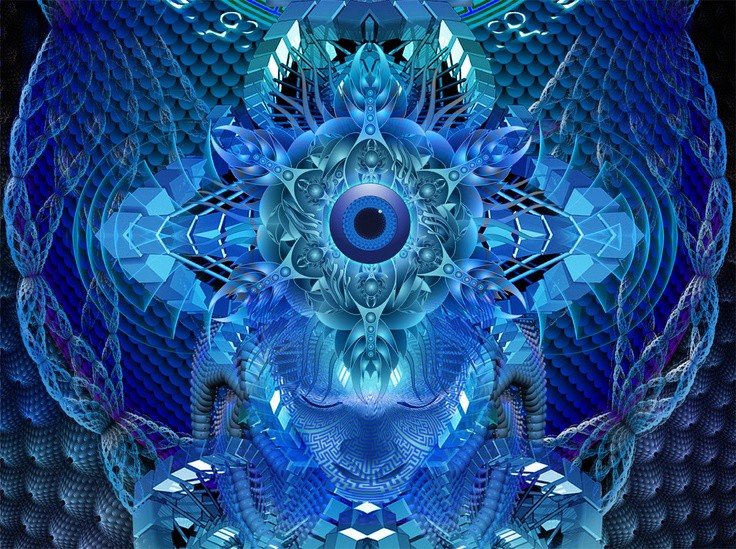
The pineal gland has since ancient times been regarded by mystics as the home of the elusive third eye, or the portal into the spirit world; DMT fit perfectly into this ideology. In his book, Rick Strassman’s highlighted his belief that the molecule may be produced in the pineal gland.
To add to this already unsubstantiated theory, DMT was also implicated, originally by Strassman, in natural mystical states such as birth, dying, near-death experiences, and spontaneous spiritual encounters. He conjectured that DMT floods the brain during these processes, facilitating the passage of the soul from our reality to others and vice versa. Indeed, the DMT experience was found to closely model the near-death experience. [36] But, does it really get released in the pineal gland when the time comes to die?
The truth is, DMT does naturally occur in all human bodies (and in some, or many, animals, plants, and fungi) and it has been found in the pineal gland of the brain of rodents in very small quantities. But recent research has shown that DMT is not produced in the pineal gland in anywhere near the amounts needed to induce naturally occurring mystical states.
After the pineal gland theory went from speculation to an accepted-yet-unsubstantiated fact, Strassman underwent criticism by the scientific community. He eventually reeled back, taking on a more explicitly measured approach, stating:
“I did my best in the DMT book to differentiate between what is known, and what I was conjecturing about (based upon what is known), regarding certain aspects of DMT dynamics. However, it’s amazing how ineffective my efforts seem to have been. So many people write me, or write elsewhere, about DMT, and the pineal, assuming that the things I conjecture about are true. When I was writing the book, I thought I was clear enough, and repeating myself would have gotten tedious.
We don’t know whether DMT is made in the pineal. I muster a lot of circumstantial evidence supporting a reason to look long and hard at the pineal, but we do not yet know. There are data suggesting urinary DMT rises in psychotic patients when their psychosis is worse. However, we don’t know whether DMT rises during dreams, meditation, near-death, death, birth or any other endogenous altered state.” [37]
Latest research, conducted by Dr Jimo Borjigin and colleagues, suggests that DMT may be produced in the cortical neurons. In fact, the researchers discovered "a significant increase of DMT levels in the rat visual cortex was observed following induction of experimental cardiac arrest." [22] In other words, DMT does seem to be released in the brain at the time of death. Dr Borjigin further argues that the molecule is produced even in the absence of a pineal gland, which, although it has the necessary ‘machinery,’ may not contribute much to overall DMT production in the brain.
If you're curious to learn more about the relationship between DMT and the pineal gland, here is our article on What the Science Says about it.
Part 2:
Practical
“DMT is the strongest hallucinogen there is. If it’s possible to get more loaded than that, I don’t want to know about it.”
- Terence McKenna
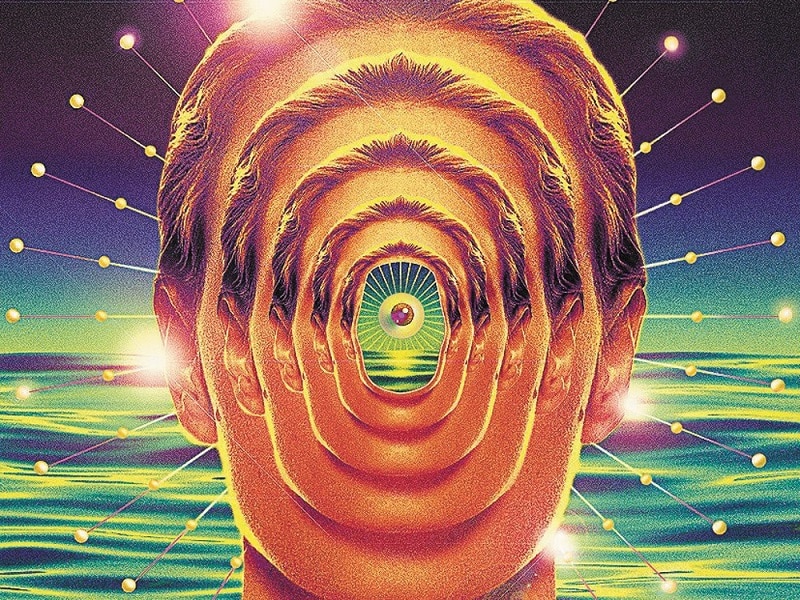
DMT Extraction
From quite straightforward to extremely complex, numerous methods of DMT extraction are available even to enthusiasts without any experience in chemistry. Firstly though, it’s necessary to obtain the plants which have high enough levels of DMT for the extraction to make sense.
The options will depend on your local flora availability or the ability to have these plants shipped. Most commonly, the selection comes down to purchasing Psychotria viridis or Diplopterys cabrerana leaves, or Mimosa hostilis root bark, which can be found in online ethnobotanical shops, or harvesting the root bark from one of the DMT-rich Acacia species—if they grow in your area. [19]
These plants are ostensibly legal in some Western countries; you can check the Legality section of this guide for more information. However, if you are concerned about ordering plants well-known to contain DMT, there are also numerous obscure DMT-containing plant species which often don’t undergo the regulations that the most popular ones do. [38]
Some of them are available to purchase online, and you are encouraged to research and find your preferred suppliers, but we strongly advise that you get fully acquainted with your local laws and always act in accordance with them. Additionally, if you have a green thumb, you may also consider obtaining seeds (which usually are not regulated as they don’t contain any DMT themselves) and growing your own DMT plants for continued, sustainable use.
Once you have your plant matter ready for extraction, you can determine which method will work best for you. Many different methods (teks) are available on DMT-related forums online. [39] They involve handling chemicals, which are mostly easy to procure, but which may be caustic, so require careful handling. The simplest methods revolve around dissolving the plant matter and scooping up the released DMT molecules from the solution. The more precise methods, which yield better results, usually require a higher degree of knowledge of chemistry.
How to Take DMT
DMT is predominantly smoked or vaporized rather than taken orally. Here is why:
Our bodies are quite good at breaking the ‘spirit molecule’ down. If taken orally, DMT will quickly get metabolized by enzymes called monoamine oxidase enzymes (MAOs). They exist both in the mouth and in the stomach lining. Thus, the only way to orally consume DMT effectively would be by introducing a chemical which will protect the molecule from oxidation.
These chemicals are called MAO inhibitors (MAOIs), [40] and they are present in numerous plant species as well as in some pharmaceuticals. The β-carboline alkaloids found in B. caapi, the primary plant used to brew ayahuasca, are the most notable example of MAOIs often combined with DMT to achieve astonishing and prolonged visionary effects.
Aside from B. caapi, a few other substitutes commonly used include Syrian rue (Peganum harmala), passion flower (Passiflora incarnata), individual or combined extracted alkaloids from B. caapi such as harmaline and harmine, and the antidepressant drug Moclobemide. The result of combining these analog substances with DMT is referred to as anahuasca (when using naturally occurring sources) or pharmahuasca (when using extracted substances or pharmaceuticals).
It’s highly important to combine only reversible MAOIs—also known as RIMAs—with DMT. Taking irreversible MAOIs would block cells from making new enzymes for a period of two weeks, which can be dangerous.
Smoking freebase DMT
With all this in mind, smoking and insufflation as the two available effective and direct ways of consuming DMT, because they bypass the metabolism processes in the mouth and stomach. Insufflating DMT, however, is not recommended because the absorption rate is lower and the nasal damage can be considerable.
Smoking brings the molecule directly into the bloodstream through the lungs. It is metabolized in about 15min this way, but it’s also possible to consume some MAOIs about 20min before smoking DMT and prolong the experience significantly that way (also see changa, below).
If smoking freebase DMT (pure crystal), you should prepare for its aggressive effect on the lungs. Even smelling the plastic-burning-like aroma of the smoke is enough to understand that DMT is not a smooth, mild herb like cannabis.
Performing short breathing exercises before smoking can help get your lungs ready to take the smoke. They are done by massaging your chest and thymus area while breathing in and out as much as possible for a few minutes.
A quick digression here on the topic of breathing—many processes which include intense breathwork have been reported to occasion mystical experiences without the need for any psychedelic stimulation. The discovery of DMT in the lungs of rabbits [23] (which implicates that it may exist in human lungs as well) may be connected with the research showing that DMT can protect human cells from death in low-oxygen environments. [41] These findings may be, in turn, linked to the reports of breathwork inducing DMT-like states of consciousness.
Learn more about this in our article Can Breathwork Get Us High on DMT?
Aside from the harsh nature of the smoke itself, the inhalation is additionally complicated by two things:
- The crystal requires immense heat in order to melt effectively, and
- You need to inhale a lot of the smoke to achieve the full-on effects.
Both of these can be mitigated by using an advanced vaporizer suitable for the purpose. However, in absence of such a device, a glass crack pipe is the most commonly used tool.
Because the burning temperature needs to be exquisitely high, a torch lighter is advised as opposed to regular fire. The flame should not touch the crystal because it can overcook and thus waste it.
It may take you a few tries to refine your smoking technique. A good rule of thumb is to not inhale all the smoke at once, because this can cause a coughing fit. Rather, try to gradually sip in the smoke. Once you inhale it, try to hold it in your lungs for a few seconds. Then, if you’ve gotten enough of it in, prepare for liftoff.
Smoking changa
Smoking changa is also a viable alternative, as the herbal admixtures make the smoke smoother and allow for more spaced out dosing and a less overwhelming trip. Its creator, Julian Palmer, describes changa trips as more integrated, connected and relevant to the human experience than freebase DMT trips.
Changa also usually contains B. caapi and sometimes another MAOI such as passionflower. Just like when MAOIs are taken in liquid form, these admixtures protect the DMT molecules from being rapidly broken down, so changa can basically be regarded as smokable ayahuasca.
Aside from MAOIs, other healing and aromatic plants are added to changa to modulate its effects and taste. A classic recipe for the herbal blend of changa contains: 30% ayahuasca vine and/or leaf, 20% mullein, 20% passionflower, 20% peppermint, 5% calendula, 5% blue lotus.
The herbal side of the changa blend should consist of at least 25% of B. caapi. Both the leaf and the bark of the vine are okay to use – it’s best if the mix contains both, if possible. Varying the other herbal ingredients can bring different aspects of the trip to the foreground, or draw upon the respective herbs’ healing effects.
Changa is easily made by dissolving the DMT crystal in alcohol, adding all the herbal ingredients to the solution, and then drying the mix.
A standard DMT ratio for a gentle changa blend is around 25% of content by weight. So, in four grams of changa, there would be one gram of DMT. This equates to 30 light experiences, 20 moderate experiences, 10 strong experiences, or 5 extreme experiences. A 30% DMT blend is stronger, and the 40-50% DMT blends are very strong and equate to, or can even exceed, the strength of smoking freebase DMT by itself, due to the combined effect of the herbs.
The gentler changa blends allow people to access the DMT space in a comfortable and beneficial way, which won’t require days or years to process and integrate. Strong blends, on the other hand, due to their ease of smoking, enable users to break through with less lung stress and less likelihood of coughing or gagging. Changa can also be vaporized with a proper vaporizer, just like pure crystal.
Dosage
For smoking or vaporizing pure DMT crystal, the doses are as follows:
- Low dose: <25mg
- Moderate dose: 25-40mg
- Full-power dose: 40-50mg
It’s always best to start with lower doses (10-15mg) and gauge how DMT works on you as you increase them. You will achieve the best results if you manage to smoke the entire dose of DMT in one hit, but 2-3 hits will also work, provided you can stay conscious for long enough.
For making ayahuasca, anahuasca, and pharmahuasca mixes, 50mg is the recommended dose.
Remember to always have a sober sitter present with you when smoking DMT. The experience can be intensely disorienting or knock you out completely, making the presence of a stable, responsible individual a must.
Effects
Smoking DMT is quite unlike any other psychedelic experience. The onset is immediate, the peak rapid and intense, and the comedown almost instantaneous yet gentle. As Terence McKenna famously stated, “What happens with DMT is you leap over all the barriers in the first few seconds. Unlike mushrooms, where over hours and hours on a high dose you might navigate yourself to the center of the mandala, DMT is like being struck by metaphysical lightning.”
Those who manage to smoke the full recommended dose can count on being completely swept away from this existence and plunged into a succession of hyperdimensional, eternal realms brimming with complex, intricate, objects, unfathomable transformations of the environment, and intelligent entities which gladly interact with visitors.
The whole experience can be said to be short (up to 15-20min, without having taken MAOIs prior to blasting off), but anyone who has visited the DMT realms will confirm that earthly time is entirely irrelevant as a measurement of the duration of the spiritual journey.
DMT trips vary substantially depending on the amount successfully consumed. The milder trips typically occasion a blissful, light-headed experience accompanied by a drop in stress and anxiety and pleasant tingling sensation throughout the body. Visuals in mild trips are normally gentle and include colorful lights, geometrical patterns, and fractal displays, while open-eyed distortions resemble those perceived on LSD, but have a more vivid, holographic feeling. Intermediate trips are typically similar, but with more intense visuals and sensations, and with possible entity encounters.
DMT Breakthroughs
What is truly special about DMT, though, are the so-called “breakthrough” experiences.
If you smoke enough, the effects of the molecule will undergo a paradigm shift, turning into a journey vastly different than what is normally experienced on a recreational psychedelic.
DMT breakthroughs are indescribable, although Terence McKenna is known for giving the English language a run for its money with his attempts.
“Just two large tokes away, at any given time, is this non-Euclidian, non-Newtonian, irrational, un-englishable place. But it’s not smooth and empty and clear, that’s not what gives it its indescribability. What gives it its indescribability is its utter weirdness, its alienness, its power to astonish.”
- Terence McKenna
These experiences are nothing short of absurd journeys through hyperspace. The default reality melts away as the soul untethers from the body and the personality and gets propelled into eternal realms brimming with ineffable landscapes, unexplainable physics, highly complex monolithic structures, and intelligent (trickster) entities.
Ego Death on DMT
Once you can break through on DMT, time, language, memories, bodily sensations, and everything else that makes one a functional person in the real world ceases to exist and matter, and all that’s left is the tripper’s essence or soul, roaming around realities far more grand and mysterious than anything we can know of on Earth. This is the closest a human being can come to a lucid experience of death, and it is where DMT truly shines.
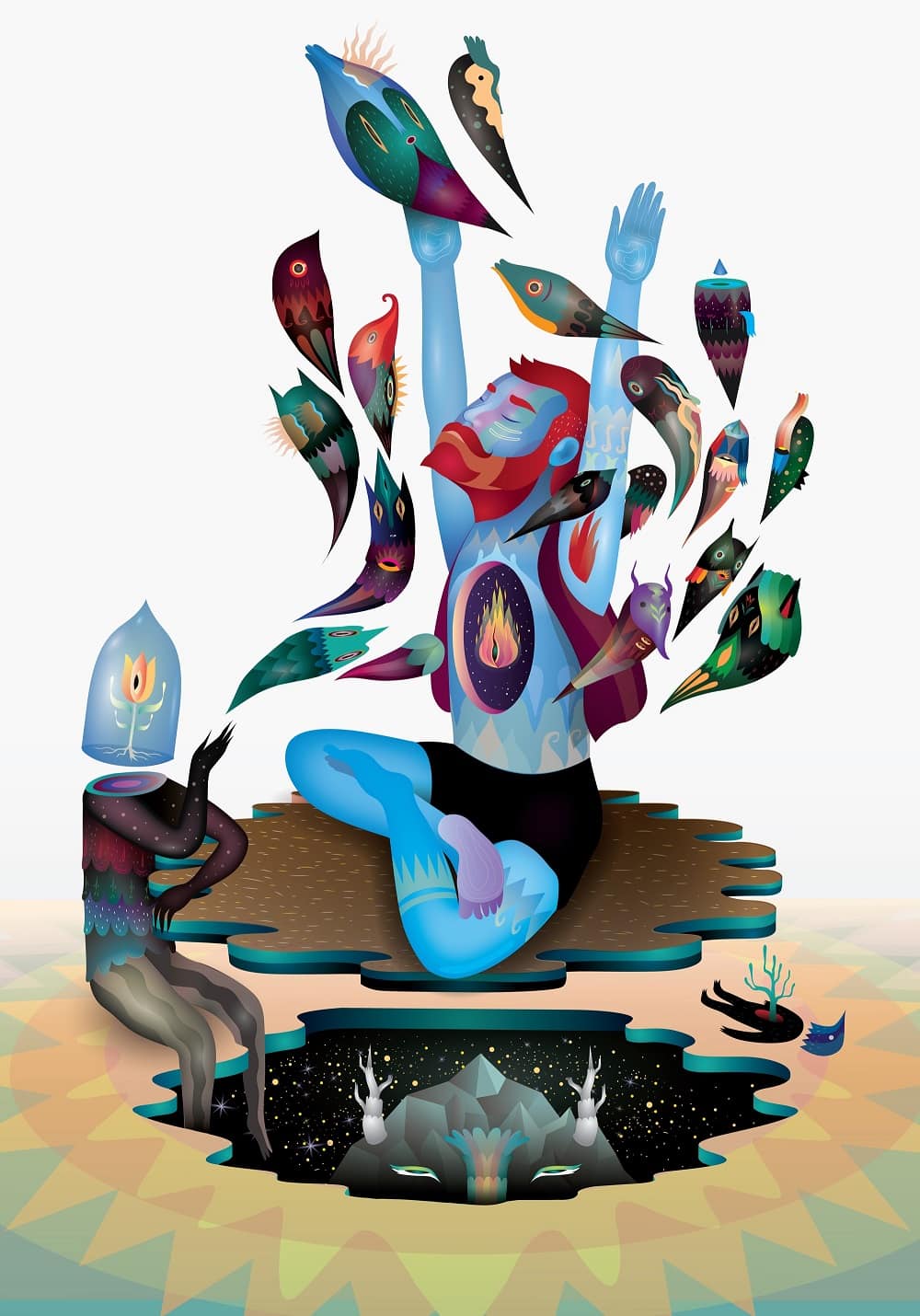
Artist credit: Ivan Blažetić-Šumski
Along with the dissolution of all aspects of human life, in the breakthrough realm fear disappears, too. The state offers a perfect opportunity for pure spiritual surrender, acceptance, and forgiveness, while presenting the journeyer with an astounding glimpse of what may lie beyond, and insight transmitted telepathically by the phantasmagorical entities dwelling there.
The experience of making peace with death alone is enough of a spiritual milestone to forever change a DMT tripper once they return to their corporeal husk. Living onward with a clearer idea of their own mortality, which DMT had catalyzed, can have a beneficial influence on one’s general concept of the human experience, personal priorities, and emotional responses in life events and interactions.
Add to that the visions of the realms beyond, which many trippers report feel more real than reality itself (the expression “waking up from a simulation” is often used), and it becomes clear how “the nuclear bomb of the psychedelic family” can create a radical shift in consciousness in those who try it.
It’s typically advised to lie down and close the eyes when a high dose of DMT has been consumed. However, users who are able to keep their eyes open during a strong DMT trip have reported witnessing the astounding merger of the DMT space and entities with our 3D world. The wild transformations and incredible movement of matter and energy in the physical reality make open-eyed DMT trips a very special experience.
The DMT Entities
The entities encountered in DMT trips can take on vastly different shapes and forms, but, interestingly, some common archetypes have repeatedly come up in trip reports by psychonauts worldwide.
Terence McKenna famously named these entities ‘machine elves.’ He and many independent DMT users have frequently described them as jesters, ones which gleefully greet the visitor, show them around, dance and play, and summon hyperdimensional objects or change properties of existing ones (or their own appearance and features). The entities strive to get their visitor’s attention, sometimes telepathically asking comical questions such as “What took you so long to come visit?,” teaching and explaining things, and/or tricking them.
“The testimony of DMT, for me, is that there is a nearby dimension, teeming with intelligences, that from one of the more conservative perspectives seems like an ecology of souls.”
-Terence McKenna
Rick Strassman’s research brought to light the commonalities of the collective experience of these otherworldly creatures. The participants in his studies which took DMT described them as “entities,” “beings,” “aliens,” “guides,” and “helpers.” Aside from the ‘machine elves,’ other frequently reported entities dwelling in DMT realms included clowns, reptiles, mantises, bees, spiders, cacti, and cartoonish or stick figures.
It’s also noteworthy how often entities are seen in DMT visions. Strassman reported that, out of the thousand pages of notes on participant experiences he had collected, 50% of them included interactions with DMT entities. Similarly, Peter Mayer, who had analyzed 340 DMT trip reports in 2005, reported that two thirds of them referenced autonomous entities which interact in a sentient and intentional manner. [42]
Side effects and precautions
“People say: ‘Is DMT dangerous? It sounds so crazy!’
The answer is—only if you fear death by astonishment.”
- Terence McKenna
On its own, in healthy people, DMT is not a harmful substance. There is no evidence it causes physiological harm, addiction, or tolerance. However, it is a highly potent hallucinogen which causes a wide range of changes in physiology and perception, making it inherently dangerous if not consumed with caution and in a safe environment.
Some common physiological side-effects which have been reported include: a temporary rise in heart rate and blood pressure, nausea (more likely if DMT is taken as part of ayahuasca or in combination with extracted ayahuasca alkaloids), dizziness, confusion, lack of coordination, shivering, spasms, and, very rarely, loss of consciousness.
Due to the acute physiological changes DMT can cause, any individuals with a pre-existing heart condition, such as hypertension, should take high precautions when smoking DMT or avoid smoking it altogether.
Due to the perceptual changes and confusion DMT can cause, performing any physical activities and handling any heavy machinery under its effect is not advised, as it may lead to injury. DMT is best enjoyed in a spacious, comfortable environment, while lying down, and with a sober sitter present.
Like with any psychedelic, there is also a risk of getting overwhelmed or frightened by the visions, hallucinations, or one’s own thoughts. These negative feelings may spiral into anxiety or panic. Bad trips on DMT are not uncommon, and they can be far more harrowing than on other psychedelics. This is why only individuals with prior experience with tripping on high doses of other psychedelics are advised to try smoking DMT.
DMT can also create a feeling of dissociation between the mind/soul and the body. Spiritual detachment from the body is viewed by some as the holy grail of the DMT experience—the passageway to ego death, and it can catalyze incredibly powerful and profound shifts in consciousness. However, it can also produce symptoms of depersonalization, which may be difficult to recover from and integrate.
Finally, it’s important to mention that DMT should not be mixed with other drugs or medication.
There are several potentially dangerous chemical interactions with DMT; most notably, if consumed alongside with substances which influence serotonin levels (such as SSRI antidepressants) or alter blood pressure (such as alcohol or hyper/hypotension medication). These interactions can lead to serotonin syndrome and hypertensive crisis respectively, both of which can have fatal outcomes. If MAOIs are used in combination with DMT, these effects may be potentiated even more, which is why people on these classes of medication are also strongly discouraged from drinking ayahuasca.
What Can We Learn From Bad Trips? Find out here.
Other psychoactive substances, such as opioids, CNS depressants or stimulants, phenethylamines, methamphetamines, barbiturates, antipsychotics, and the like should also not be used simultaneously with DMT. The interactions have not yet been fully researched, but reasonable assumptions say that there may be risk of harm.
Once again, one of the best precautions to take when smoking DMT is to have a sober sitter present in case anything goes wrong.
Healing with DMT
Because DMT is such an outrageously hallucinogenic compound and because it’s not under a spotlight in the collective public consciousness (compared to other, more popular psychedelics), the research into it often faces lack of support and institutional funding. As a result, it lies on the fringes of psychedelic research, which is on the fringes of conventional clinical research as it is.
Nevertheless, a few promising studies on DMT’s therapeutic potential have been published and many more are expected to follow.
A recent study conducted on rodents found that “chronic, intermittent, low doses of DMT produced an antidepressant-like phenotype and enhanced fear extinction learning without impacting working memory or social interaction.” [43] The researchers found the effect of low doses to be distinct to that of a high dose, which they state causes an uptick in anxiety in the animals.
The same group of researchers also looked deeper at this increase in anxiety, and found that “while DMT elicits initial anxiogenic responses in several of these paradigms, its long-lasting effects tend to reduce anxiety by facilitating the extinction of cued fear memory.” When administering DMT to rodents they reported “characteristic behavioral response induced by many antidepressants.” [44]
The anxiolytic and antidepressant reports from these studies are aligned with results of research done with ayahuasca [45] and psilocybin, [46] as well as with 5-MeO-DMT. [47] All of these substances achieve their psychoactive and therapeutic effects via either DMT or its close chemical relatives.
There is no doubt that the tryptamine class of psychedelics has rapid and long-lasting beneficial effects on certain forms of mental illness such as anxiety and depression. However, all this research is still in its infancy, and the hope is that the following decades will see a loosening of restrictions governing psychedelic research and a subsequent flurry of positive and replicable findings.
Find out here how to Heal with Bufo Alvarius and 5-MeO-DMT
Integration with DMT
The DMT experience can be so novel, and so profound, that it is absolutely necessary to make an effort to integrate it effectively into your life. This process may take days, weeks, or years, and it begins immediately following your trip.
Some facilitators will make sure to speak to you after the ceremony, to talk you through your experience and help you interpret parts that you are struggling with. Most good retreats will allow space for a sharing circle after the main ceremony, allowing you to hear other people’s experiences and express your own.
In the days and weeks following the experience, it’s recommended to continue any spiritual practices you were cultivating beforehand, and observe how they may feel different. Revisit the experience through these practices, and think about which parts of your DMT journey you want to bring into your life, and how.
Try your hand at expressing yourself through art or music, if words don’t seem to be enough. If the retreat provides it, make sure to continue a regular correspondence with your facilitator or guide. If you are particularly struggling with some aspects of the experience, consider seeing a specialized integration therapist; they are an emerging class of counselors specializing in helping people process psychedelic experiences and they can be found all over the world. Have a look at our Resources section for more details.
Legality
DMT is illegal internationally. However, according to the International Narcotics Control Board, live plants which contain DMT are not subject to international law. Therefore, countries have to come up with their own laws to specifically prohibit the plants that contain DMT. France has done this—there, it’s illegal to possess pretty much any plant that contains DMT.
In some countries (such as Latvia) dried plants may count as a "preparation" of DMT. So even if a live DMT plant may be legal in your country, you may not necessarily get the dried plant shipped to you legally.
Unless your country has specifically ruled in court that DMT-containing plants are legal to possess, don’t assume anything! You could find yourself being made an example of.
Additionally, always keep in mind that, even if the plants themselves are legal and you can get a hold of them, once the DMT is extracted, it becomes an illicit substance. Everywhere where the law is enforced, possession, use, and sale of DMT are highly punishable offenses.
What Next?
For many people, the time just after their first DMT experience feels like a new beginning. The world may feel refreshed, or you may feel as if some of your demons or troubles have been exposed and cleansed. You may have been given a new purpose in life; or perhaps just reminded of the one you’ve always had.
In many ways, DMT can put you at the start of a long road. There will always be so much more to learn, so many more ways to change, and so much more healing to do.
FAQ
Are DMT and ayahuasca the same?
There are numerous differences between the two. DMT is a common ingredient in ayahuasca, but a DMT trip is very distinct from an ayahuasca journey. For starters, DMT effects last about 15min, while the effects of ayahuasca can last for over six hours.
A DMT trip is fast, aggressive, overwhelming, and alien to the human experience, whereas an ayahuasca journey is commonly gradual, nurturing, understanding, and introspective.
DMT experiences are often so wild that they are borderline impossible to integrate, whereas insights gained under ayahuasca tend to be applicable and can eventually be embraced and catalyze very specific and practical life changes.
Who discovered DMT?
As a naturally-occurring psychedelic, it was probably discovered by one of the South American indigenous communities who used a leguminous plant to make a snuff.
As a chemical, it was synthesized by German chemist Richard Helmuth Fredrick Manske in 1931. The first scientist to research and describe its effects was Hungarian chemist and psychiatrist Stephen Szára in 1956.
What is the difference between hemp oil, CBD oil, and cannabis oil?
Hemp oil is a valuable nutritional supplement and a great skin moisturizer. However, it does not have most of the therapeutic benefits that CBD oil has.
Cannabis oil has its own set of therapeutic benefits, but, unlike CBD oil, it’s psychoactive and only legal in states where recreational and / or medicinal marijuana use has been legalized.
Why does DMT exist in so many plant and animal species?
No one knows for sure. Some research indicates it may be connected with a response to stress in mammals. It’s not possible to know whether this assertion can be extended to plants, too.
What does DMT look like?
Freebase DMT is a fine white, light or dark yellow crystal powder. Changa is a dark, preferably finely ground, sometimes somewhat chunky herbal mix.
What does DMT smell like?
The DMT smoke smells like burning plastic. It has a very distinct, instantly recognizable smell.
Is DMT produced in the pineal gland?
One of the most common myths is that the pineal gland produces all the DMT that can be found in the human body. This isn’t true, but it’s likely that it produces some.
Recent research implies that it may be produced in the cortex, and certain animal studies suggest that lungs may also be a DMT factory.
Is DMT released during birth, death, near-death events, and dreams?
There is no evidence to support all these conjectures at the moment. However, recent research indicates that it seems to be released in the visual cortex in dying rodents. [22] If you're curious to learn more, you can read our full article on this topic - Is DMT Released at Death?
Are DMT-containing plants legal?
They are legal in some western countries, with a few restrictions. You may consult the Legality section of this guide for more information. Keep in mind that, even if the plants are legal themselves, DMT extraction almost never is.
Which DMT plant is the best for brewing or extraction?
Psychotria viridis, Diplopterys cabrerana, Mimosa hostilis, Acacia confusa, and Acacia obtusifolia all have sufficient levels of DMT.
Can DMT be detected in a drug test?
Because it is rapidly metabolized by the body, DMT is impossible to test for unless the test is performed immediately after ingestion.
Typical drug screens (even the extensive ones) don’t include DMT for this reason, and it is also not chemically similar to substances that are usually tested for, so the likelihood of triggering a false positive for other drugs is practically zero.
Can I microdose DMT?
DMT is not a very common choice for microdosing, but seeing that it’s chemically quite similar to psilocin in magic mushrooms, there is little reason why it shouldn’t work similarly well. In fact, some recent studies suggest that low doses of DMT can have an anxiolytic and antidepressant effect.
How can I break through with DMT?
In order to break through, you will need to a) smoke a high dose of DMT (between 30 and 50mg) and b) smoke it efficiently. There’s a learning curve with smoking pure freebase DMT; your lungs should take a few tries to learn how to tolerate the harsh smoke.
The rule of thumb here is to not inhale it all at once but to gradually sip it in. Alternatively, you can use specialized vaporizers or blend your own changa herbal mix; both of those will make the smoke easier to handle.
Will DMT change my life?
If you take enough, it can not change you.
Can I have a bad trip on DMT?
On low and moderate doses, not likely. Strong DMT trips, however, are likely to be much more overwhelming that any other psychedelic trip available. This doesn’t make them bad, though.
The bottom line is, if you can handle the feeling of being overwhelmed by a psychedelic experience and surrender to it, you should have no problems with DMT; on the other hand, if you reject what’s happening and hold onto fear, you may have a bad time. It’s important to have a sober sitter present in case a trip turns sour.
Is it alright to take DMT when you are depressed?
If you are on any SSRI or other MAOI medication, you are advised to not smoke DMT. Otherwise, it’s alright to take it and it may even be therapeutic.
Can DMT cure anxiety?
Some recent research indicates that low doses of DMT can have an anxiolytic effect. Higher doses, however, have been shown to cause a short-lived spike in anxiety, but they appear to also be beneficial long-term.
How long does DMT keep?
DMT has quite a long shelf life if stored in a dry place. It can oxidize over time, which can be seen from a change in color or crystal consistency.
This doesn’t affect potency much, but it may make it harder to smoke. To extend DMT’s shelf life indefinitely, it should be stored in a vacuum container with a desiccant packet thrown in.
Where is DMT legal?
The use of DMT is only allowed in those countries and territories in which the use of ayahuasca is legal. This means it’s legal in Ecuador, Colombia, Peru, Brazil, Oakland and Santa Cruz, CA, and within those international branches of the two syncretic ayahuasca churches Santo Daime and UDV which have received approval for religious ayahuasca use in their respective countries and districts.
Portugal and parts of Spain also have all personal drug use decriminalized.
References
- Pochettino, M.L., Cortella, A.R. & Ruiz, M. Hallucinogenic snuff from Northwestern Argentina: Microscopical identification of anadenanthera colubrina var. cebil (fabaceae) in powdered archaeological material. Econ Bot 53, 127–132 (1999).
- Exploring the Early Americas - Columbus and the Taíno. Retrieved from: https://www.loc.gov/exhibits/exploring-the-early-americas/columbus-and-the-taino.html in August 2020
- The European Agencu for the Evaulation of Medicinal Products, Veterinary Medicines Evaluation Unit. Virola sebifera - Summary Report. Retrieved from: https://www.ema.europa.eu/en/documents/mrl-report/virola-sebifera-summary-report-committee-veterinary-medicinal-products_en.pdf in August 2020
- Ott, J. Pharmacology of Bufotenine. The Journal of Psychoactive Drugs, September 2001. Retrieved from: http://entheology.org/edoto/anmviewer.asp?a=9&z=8 in August 2020
- Torres, C.M., Repke, D.B. Anadenanthera: Visionary Plant of Ancient South America. Haworth Herbal Press, 2006.
- Beyer, S. (2012). On the Origins of Ayahuasca. Retrieved from: https://www.singingtotheplants.com/2012/04/on-origins-of-ayahuasca/ in August 2020
- Brown, E.L. (2012). Investigating the use of coca and other psychoactive plants in Pre-Columbian mummies from Chile and Peru. An analytical investigation into the feasibility of testing ancient hair for drug compounds. Retrieved from: https://core.ac.uk/download/pdf/20443801.pdf in August 2020
- Rodd, R. (2002) Snuff Synergy: Preparation, Use and Pharmacology of Yopo and Banisteriopsis Caapi Among the Piaroa of Southern Venezuela, Journal of Psychoactive Drugs, 34:3, 273-279, DOI: 10.1080/02791072.2002.10399963
- Manske, R.H.F. (1931) A Synthesis Of The Methyltryptamines And Some Derivatives. Canadian Journal of Research, 5:592-600, https://doi.org/10.1139/cjr31-097
- Szára, S. Dimethyltryptamin: Its Metabolism In Man; The Relation To Its Psychotic Effect To The Serotonin Metabolism. Experientia. 1956;12(11):441-442. doi:10.1007/BF02157378
- Angrist, B., Gershon, S., Sathananthan, G. et al. Dimethyltryptamine levels in blood of schizophrenic patients and control subjects. Psychopharmacology 47, 29–32 (1976). https://doi.org/10.1007/BF00428697
- Strassman, R J., Qualls, C.R., Uhlenhuth, E.H., & Kellner, R. (1994). Dose-response study of N,N-dimethyltryptamine in humans. II. Subjective effects and preliminary results of a new rating scale. Archives of general psychiatry, 51(2), 98–108. https://doi.org/10.1001/archpsyc.1994.03950020022002
- Riba, J., Rodríguez-Fornells, A., Strassman, R. J., & Barbanoj, M. J. (2001). Psychometric assessment of the Hallucinogen Rating Scale. Drug and alcohol dependence, 62(3), 215–223. https://doi.org/10.1016/s0376-8716(00)00175-7
- Strassman, R.J. DMT: The Spirit Molecule: A Doctor's Revolutionary Research into the Biology of Near-Death and Mystical Experiences. Park Street Press, 2001.
- Palmer, J. (2019) 7 Things Many People Don’t Know About Changa. Retrieved from: http://julianpalmerism.com/changa-7things/ in August 2020
- Cakic, V., Potkonyak, J., & Marshall, A. (2010). Dimethyltryptamine (DMT): subjective effects and patterns of use among Australian recreational users. Drug and alcohol dependence, 111(1-2), 30–37. https://doi.org/10.1016/j.drugalcdep.2010.03.015
- Global Drug Survey 2019. Retrieved from: https://www.globaldrugsurvey.com/gds-2019/ in August 2020
- McKenna, D.J., Towers, G H., & Abbott, F.S. (1984). Monoamine oxidase inhibitors in South American hallucinogenic plants Part 2: Constituents of orally-active Myristicaceous hallucinogens. Journal of ethnopharmacology, 12(2), 179–211. https://doi.org/10.1016/0378-8741(84)90048-5
- List of Acacia species known to contain psychoactive alkaloids. Retrieved from: https://en.wikipedia.org/wiki/List_of_Acacia_species_known_to_contain_psychoactive_alkaloids in August 2020
- Servillo, L., Giovane, A., Balestrieri, M.L., Cautela, D., Castaldo, D. (2012). N-Methylated Tryptamine Derivatives in Citrus Genus Plants: Identification of N,N,N-Trimethyltryptamine in Bergamot. Journal of Agricultural and Food Chemistry 60 (37), 9512-9518. DOI: 10.1021/jf302767e
- List of psychoactive plants. Retrieved from: https://en.wikipedia.org/wiki/List_of_psychoactive_plants in August 2020
- Dean, J., Liu, T., Huff, S. et al. (2019). Biosynthesis and Extracellular Concentrations of N,N-dimethyltryptamine (DMT) in Mammalian Brain. Sci Rep 9, 9333. https://doi.org/10.1038/s41598-019-45812-w
- Axelrod, J. (1961). Enzymatic formation of psychotomimetic metabolites from normally occurring compounds. Science (New York, N.Y.), 134(3475), 343. https://doi.org/10.1126/science.134.3475.343
- Davis, A. K., So, S., Lancelotta, R., Barsuglia, J. P., & Griffiths, R. R. (2019). 5-methoxy-N,N-dimethyltryptamine (5-MeO-DMT) used in a naturalistic group setting is associated with unintended improvements in depression and anxiety. The American journal of drug and alcohol abuse, 45(2), 161–169. https://doi.org/10.1080/00952990.2018.1545024
- Smythies, J. R., Morin, R. D., & Brown, G. B. (1979). Identification of dimethyltryptamine and O-methylbufotenin in human cerebrospinal fluid by combined gas chromatography/mass spectrometry. Biological psychiatry, 14(3), 549–556.
- Kärkkäinen, J., Forsström, T., Tornaeus, J., Wähälä, K., Kiuru, P., Honkanen, A., Stenman, U. H., Turpeinen, U., & Hesso, A. (2005). Potentially hallucinogenic 5-hydroxytryptamine receptor ligands bufotenine and dimethyltryptamine in blood and tissues. Scandinavian journal of clinical and laboratory investigation, 65(3), 189–199. https://doi.org/10.1080/00365510510013604
- Franzen, F., & Gross, H. (1965). Tryptamine, N,N-dimethyltryptamine, N,N-dimethyl-5-hydroxytryptamine and 5-methoxytryptamine in human blood and urine. Nature, 206(988), 1052. https://doi.org/10.1038/2061052a0
- Smith, R. L., Canton, H., Barrett, R. J., & Sanders-Bush, E. (1998). Agonist properties of N,N-dimethyltryptamine at serotonin 5-HT2A and 5-HT2C receptors. Pharmacology, biochemistry, and behavior, 61(3), 323–330. https://doi.org/10.1016/s0091-3057(98)00110-5
- Preller, K. H., Schilbach, L., Pokorny, T., Flemming, J., Seifritz, E., & Vollenweider, F. X. (2018). Role of the 5-HT2A Receptor in Self- and Other-Initiated Social Interaction in Lysergic Acid Diethylamide-Induced States: A Pharmacological fMRI Study. The Journal of neuroscience : the official journal of the Society for Neuroscience, 38(14), 3603–3611. https://doi.org/10.1523/JNEUROSCI.1939-17.2018
- Fontanilla, D., Johannessen, M., Hajipour, A. R., Cozzi, N. V., Jackson, M. B., & Ruoho, A. E. (2009). The hallucinogen N,N-dimethyltryptamine (DMT) is an endogenous sigma-1 receptor regulator. Science (New York, N.Y.), 323(5916), 934–937. https://doi.org/10.1126/science.1166127
- Frecska, E., Bokor, P., & Winkelman, M. (2016). The Therapeutic Potentials of Ayahuasca: Possible Effects against Various Diseases of Civilization. Frontiers in pharmacology, 7, 35. https://doi.org/10.3389/fphar.2016.00035
- Dos Santos, R. G., Balthazar, F. M., Bouso, J. C., & Hallak, J. E. (2016). The current state of research on ayahuasca: A systematic review of human studies assessing psychiatric symptoms, neuropsychological functioning, and neuroimaging. Journal of psychopharmacology (Oxford, England), 30(12), 1230–1247. https://doi.org/10.1177/0269881116652578
- Keiser, M. J., Setola, V., Irwin, J. J., Laggner, C., Abbas, A. I., Hufeisen, S. J., Jensen, N. H., Kuijer, M. B., Matos, R. C., Tran, T. B., Whaley, R., Glennon, R. A., Hert, J., Thomas, K. L., Edwards, D. D., Shoichet, B. K., & Roth, B. L. (2009). Predicting new molecular targets for known drugs. Nature, 462(7270), 175–181. https://doi.org/10.1038/nature08506
- Wallach J. V. (2009). Endogenous hallucinogens as ligands of the trace amine receptors: a possible role in sensory perception. Medical hypotheses, 72(1), 91–94. https://doi.org/10.1016/j.mehy.2008.07.052
- Barker, S. A. (2018). N, N-Dimethyltryptamine (DMT), an Endogenous Hallucinogen: Past, Present, and Future Research to Determine Its Role and Function. Frontiers in neuroscience, 12, 536. https://doi.org/10.3389/fnins.2018.00536
- Steven Barker: Discovery of endogenous hallucinogens. Retrieved from: https://youtu.be/gv5afrSiJqA in August 2020
- Timmermann, C., Roseman, L., Williams, L., Erritzoe, D., Martial, C., Cassol, H., Laureys, S., Nutt, D., & Carhart-Harris, R. (2018). DMT Models the Near-Death Experience. Frontiers in psychology, 9, 1424. https://doi.org/10.3389/fpsyg.2018.01424
- Hanna, J. (2017). DMT and the Pineal:Fact or Fiction? Retrieved from: https://www.erowid.org/chemicals/dmt/dmt_article2.shtml in August 2020
- Tryptamine Carriers FAQ. Retrieved from: https://users.aalto.fi/~saarit2/deoxy/trypfaq.htm in August 2020
- DMT Extraction Teks. Retrieved from: https://wiki.dmt-nexus.me/Category:Extraction_Tek#DMT in August 2020
- Szabo A, Kovacs A, Riba J, Djurovic S, Rajnavolgyi E, Frecska E. The Endogenous Hallucinogen and Trace Amine N,N-Dimethyltryptamine (DMT) Displays Potent Protective Effects against Hypoxia via Sigma-1 Receptor Activation in Human Primary iPSC-Derived Cortical Neurons and Microglia-Like Immune Cells. Front Neurosci. 2016;10:423. Published 2016 Sep 14. doi:10.3389/fnins.2016.00423
- Carbonaro, T. M., & Gatch, M. B. (2016). Neuropharmacology of N,N-dimethyltryptamine. Brain research bulletin, 126(Pt 1), 74–88. https://doi.org/10.1016/j.brainresbull.2016.04.016
- Meyer, P.J. (2016). Concerning the Nature of the DMT Entities and their Relation to Us. Retrieved from: https://www.academia.edu/25050673/Concerning_the_Nature_of_the_DMT_Entities_and_their_Relation_to_Us in August 2020
- Cameron, L. P., Benson, C. J., DeFelice, B. C., Fiehn, O., & Olson, D. E. (2019). Chronic, Intermittent Microdoses of the Psychedelic N,N-Dimethyltryptamine (DMT) Produce Positive Effects on Mood and Anxiety in Rodents. ACS chemical neuroscience, 10(7), 3261–3270. https://doi.org/10.1021/acschemneuro.8b00692
- Cameron, L. P., Benson, C. J., Dunlap, L. E., & Olson, D. E. (2018). Effects of N, N-Dimethyltryptamine on Rat Behaviors Relevant to Anxiety and Depression. ACS chemical neuroscience, 9(7), 1582–1590. https://doi.org/10.1021/acschemneuro.8b00134
- Osório, Flávia de L., Sanches, Rafael F., Macedo, Ligia R., dos Santos, Rafael G., Maia-de-Oliveira, João P., Wichert-Ana, Lauro, de Araujo, Draulio B., Riba, Jordi, Crippa, José A., & Hallak, Jaime E.. (2015). Antidepressant effects of a single dose of ayahuasca in patients with recurrent depression: a preliminary report. Brazilian Journal of Psychiatry, 37(1), 13-20. https://dx.doi.org/10.1590/1516-4446-2014-1496
- Carhart-Harris, R. L., Bolstridge, M., Day, C., Rucker, J., Watts, R., Erritzoe, D. E., Kaelen, M., Giribaldi, B., Bloomfield, M., Pilling, S., Rickard, J. A., Forbes, B., Feilding, A., Taylor, D., Curran, H. V., & Nutt, D. J. (2018). Psilocybin with psychological support for treatment-resistant depression: six-month follow-up. Psychopharmacology, 235(2), 399–408. https://doi.org/10.1007/s00213-017-4771-x
Additional Artist Credits
- Title background image: Salviadroid
- Part 1 background image: The Ungoogleable Michaelangelo
- Part 2 background image: Xavi
- Part 3 background image: Amanda Sage

